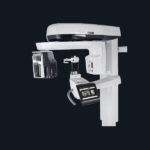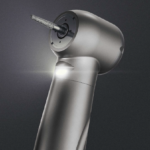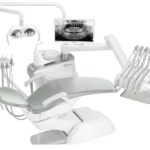
Buying an Electric Wheelchair requires some basic knowledge.
To make a purchase when a patient is looking to buy an electronic wheelchair, they should understand the types of models and major models that are available on market.
Most manufacturers will not see power wheelchairs for consumers, however, they would rather utilize a dealer who sells them to end users.
If the patient or the relative does not make research or have some basic knowledge about the product, they can end up with a product that does not suit their needs.
Moreover, it is important to understand that mobility limitations can increase the risk of patients suffering from depression, delirium, undernutrition, fall, and fall-related injuries, and loss of confidence.
Studies, however, indicate that power wheelchairs positively affect health and improve the quality of life of the patient.
Why?
Keep on reading.
Electric Wheelchair
It is important to note that power wheelchairs help to positively affect health and quality of life.
This is due to an increase in mobility and independence that comes with using an electric wheelchair.
Moreover, these wheelchairs offer the ability to travel with minimal fatigue.
According to the National Center for Biotechnology Information:
“Power wheelchairs have become a focus of attention, in much the same way the body could be considered as a project that is ‘worked at and accomplished as part of an individual’s self-identity…
As users become comfortable with power mobility, they may incorporate these devices into their body schemas, and a positive feedback loop may be established.
As power mobility is used, the user’s skills may grow and with enhanced skills, powered mobility becomes more helpful.”
A number of manufacturers offer different innovative mobility solutions to empower consumers.
This includes an extensive wheelchair range to suit different user needs.
Whether a patient needs a power wheelchair or a manual one, you can find something.
Nevertheless, finding the right wheelchair can be tasking.
Learn more about Medical Supplies Dubai here.
Factors to Consider before Making a Purchase
When choosing a wheelchair, patients often opt for an electric wheelchair for two main reasons.
The first is the issue of mobility and the second is comfort.
Electric wheelchairs or power wheelchairs are suitable for both indoor and outdoor use.
Moreover, they take up less floor space and offer tighter turning circles as well.
Therefore, a power chair enables the user to move through indoor spaces.
However, along with mobility scooters, power wheelchairs have varying design specifications.
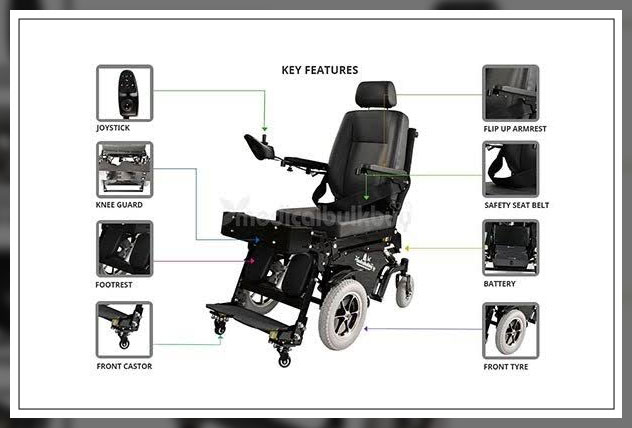
Thus, these help to find how suitable they are for indoor/outdoor performance.
When beginning to search for an electric wheelchair, patients should consider the following:
- where will you predominantly use the power chair?
- for how long will you need to use the power chair at a time?
- Do you need additional functions like tilting, raised seating, etc, for the wheelchair?
- If you need to travel with a power wheelchair, will you need a hoist to get it into the car?
Additional Factors to Consider
A number of manufacturers have a large range of rehabilitation electric wheelchairs which can include the following:
- rehab seating wheelchair
- tilt-n-space function wheelchair
- elevating electric wheelchair
A patient can consider consulting an occupational therapist regarding the use of an electric wheelchair with special functions.
They can then work with an on-site technician to engineer modifications.
However, the above service is not provided by every manufacturer.
Learn more about Musculoskeletal Imaging here.
Using the Electric Wheelchair Indoors
In most cases, electric wheelchairs are the widest at the rear wheels.
At the same time, the arm sets may be wider, depending on the particular model.
Moreover, the patient will need to make a comparison between the above dimension and the widest dimensions of the electric wheelchair.
Therefore, you can say that this is from each outside rear wheel or each outside arm set.
You may also want to consider the spaces in which you plan to use the wheelchair.
Doing so will help you to make sure that the length and width are suitable for you.
Types of Electric Wheelchairs
Some types of electric wheelchairs are:
Folding Power Wheelchair
These are for patients who are active and intend to travel with the power chair.
They can find and fit it into compact spaces like the truck of the car or storage closed while these have a weight capacity that is lower than an average framework.
However, there are a few exceptions and those units can field, but tend to weigh more for a user to lift also.
Front-Wheel Drive Electric Wheelchairs
This type of wheelchair has its wheels in front of the seating area that in effect allow the unit itself over terrain and obstacles.
As the front-wheel drive chair pulls from the front rather than pushing from the back, it is good at handling softer terrains like grass.
Foot positioning can also be easier as there is no front caster that will interfere with foot replacement.
Therefore, this type can keep the feet of the user positioned closer to the body.
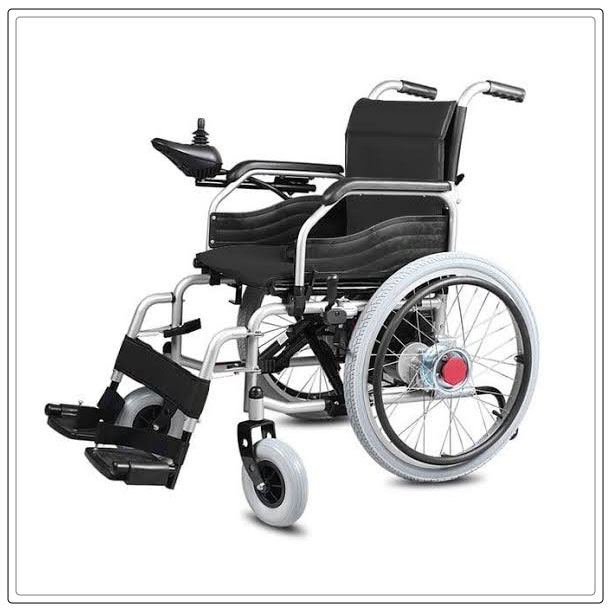
However, when turning a front-wheel drive chai, it can take a little getting used to as most of the chair is in the back of you.
So you will have to be aware of what is behind you.
These types of electric wheelchairs can also fishtail at higher speeds, so they have lower top speeds than others.
Mid-Wheel Drive Power Wheelchairs
These tend to have drive wheels in the middle of the unit and not at the front or back of the chair.
Due to their ability to spin in place, mid-wheel drive chairs are highly maneuverable, that can go through doorways or turn in tight spaces.
Moreover, this type of wheelchair is also more intuitive to drive, especially among consumers who are ambulatory.
This is because the drive wheels are underneath the seat which mimics the motion of the feet of the user when they walk.
Also, mid-wheel drive power chairs tend to have more difficulty in climbing obstacles than front-wheel drive chairs.
Other Types
Some other types of wheelchairs are:
Portable Power Wheelchairs
Travel power chairs are much lightened than most other options and these types can disassemble into smaller pieces.
This makes them easy to store and transport while traveling.
Moreover, they often have a smaller body frame which allows them to squeeze through tight spaces like doorways or hallways.
Though they do not last as long as the most standard or heavy-duty ones, these power chairs are a great option for people who have an active lifestyle and are on the go.
Bariatric Power Wheelchairs
These types of wheelchairs are a great option for those who love to go to both indoor and outdoor spaces.
Also, they help support above-average-sized riders.
There are a number of options to choose from and the patient can carry them anywhere from 400 to 700lbs in weight capacity.
Moreover, heavy-duty models often have a lot more torque to add to their performacnes and long-lasting battery.
Manual vs. Power Wheelchair
The following are the factors to look for when you want to consider buying a manual or power wheelchair:
Ease of Mobility
Depending on the specific circumstances, a manual wheelchair can be more difficult to handle than an electric power chair.
if the patient is propelling the chair themselves, a normal one can present challenges for all-dlong-distancestance movements.
Moreover, they will need upper-body strength and endurance to maneuver the chair and turn its large wheels.
On the other hand, electric wheelchairs feature a battery, motor, and other parts that help them movare e and drivable with little effort.
Comfort
As power wheelchairs are for long-term mobility, they often feature more seat padding and supporttheir than manual counterparts.

In case the patient has a chronic condition, they may prefer a power wheelchair as it offers a softer, thickly padded seat.
A manual chair features a thinner seat and back padding so that it is easier to fold and transport.
Cost and Upkeep
Patients may choose manual wheelchairs as they meet their mobility requirements, are easier to transport , and less expensive.
However, power wheelchairs have a lot more parts and the electrical system can break down at any time.
Transportability
While comparing ease of transport, manual wheelchairs are the obvious choice.
A manual chair is lightweight and can collapse in a way that makes it fit well in most standard-sized automobile trunks.
On the other hand, an electric wheelchair will need a special van or large headroom that features a lift or ramp.
Things to Avoid
For first-time users, there are a few things a patient should remember to avoid doing when an using electric wheelchair.
Otherwise, they can risk damaging the unit.
When an using electric wheelchair, make sure that it is designed to go up an incline or have a climbing degree anything between 8 degrees and 12 degrees.
This, however, does not mean that the patient should constantly ride uphill through as it will rain on the battery and cause more significant damage.
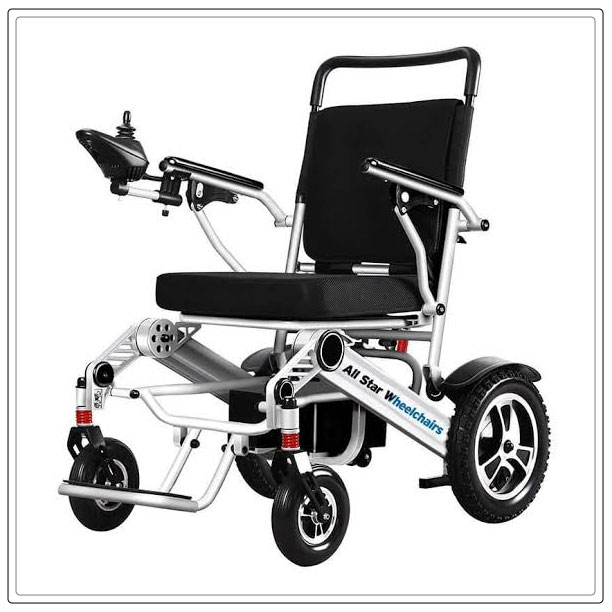
Doing this, it will make the chair perform under more power and if the patient does not do it regularly, it can ruin the batteries.
Moreover, it is important that the patient should never go over the weight capacity.
Another important thing to remember is that the patient should never leave the power chair in rain or in outdoors.
Parts can rust and they are often not under warranty in such cases.
Final Thoughts
According to experts, patients can have battery-powred robotic leg braces and exoskeletons can become a potential alternative to wheelchairs for those who suffer from leg paralysis. These assistive devices are, however, in the early stages and currently cost more than electric power chairs.
Yet, they represent a promising technology for the future than will become increasingly affordable. Automobile manufacturers also have come up with new vehicle designs that make it possible for wheelchair users to roll into the cars and drive while still seated, without depending on lifts, ramps, or trunk storage.


